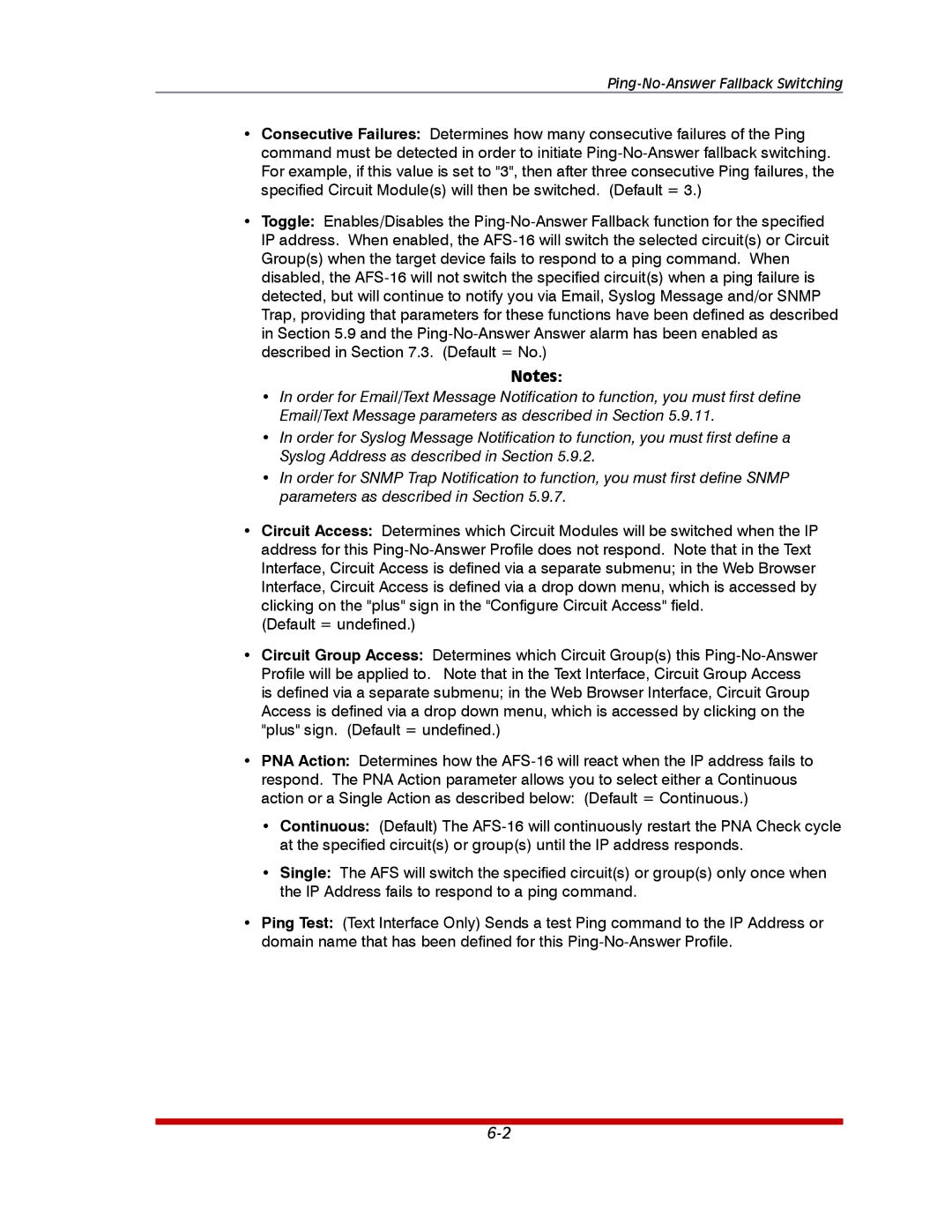Ping-No-Answer Fallback Switching
•Consecutive Failures: Determines how many consecutive failures of the Ping command must be detected in order to initiate Ping-No-Answer fallback switching. For example, if this value is set to "3", then after three consecutive Ping failures, the specified Circuit Module(s) will then be switched. (Default = 3.)
•Toggle: Enables/Disables the Ping-No-Answer Fallback function for the specified IP address. When enabled, the AFS-16 will switch the selected circuit(s) or Circuit Group(s) when the target device fails to respond to a ping command. When disabled, the AFS-16 will not switch the specified circuit(s) when a ping failure is detected, but will continue to notify you via Email, Syslog Message and/or SNMP Trap, providing that parameters for these functions have been defined as described in Section 5.9 and the Ping-No-Answer Answer alarm has been enabled as described in Section 7.3. (Default = No.)
Notes:
•In order for Email/Text Message Notification to function, you must first define Email/Text Message parameters as described in Section 5.9.11.
•In order for Syslog Message Notification to function, you must first define a Syslog Address as described in Section 5.9.2.
•In order for SNMP Trap Notification to function, you must first define SNMP parameters as described in Section 5.9.7.
•Circuit Access: Determines which Circuit Modules will be switched when the IP address for this Ping-No-Answer Profile does not respond. Note that in the Text Interface, Circuit Access is defined via a separate submenu; in the Web Browser Interface, Circuit Access is defined via a drop down menu, which is accessed by clicking on the "plus" sign in the "Configure Circuit Access" field.
(Default = undefined.)
•Circuit Group Access: Determines which Circuit Group(s) this Ping-No-Answer Profile will be applied to. Note that in the Text Interface, Circuit Group Access is defined via a separate submenu; in the Web Browser Interface, Circuit Group Access is defined via a drop down menu, which is accessed by clicking on the "plus" sign. (Default = undefined.)
•PNA Action: Determines how the AFS-16 will react when the IP address fails to respond. The PNA Action parameter allows you to select either a Continuous action or a Single Action as described below: (Default = Continuous.)
•Continuous: (Default) The AFS-16 will continuously restart the PNA Check cycle at the specified circuit(s) or group(s) until the IP address responds.
•Single: The AFS will switch the specified circuit(s) or group(s) only once when the IP Address fails to respond to a ping command.
•Ping Test: (Text Interface Only) Sends a test Ping command to the IP Address or domain name that has been defined for this Ping-No-Answer Profile.

